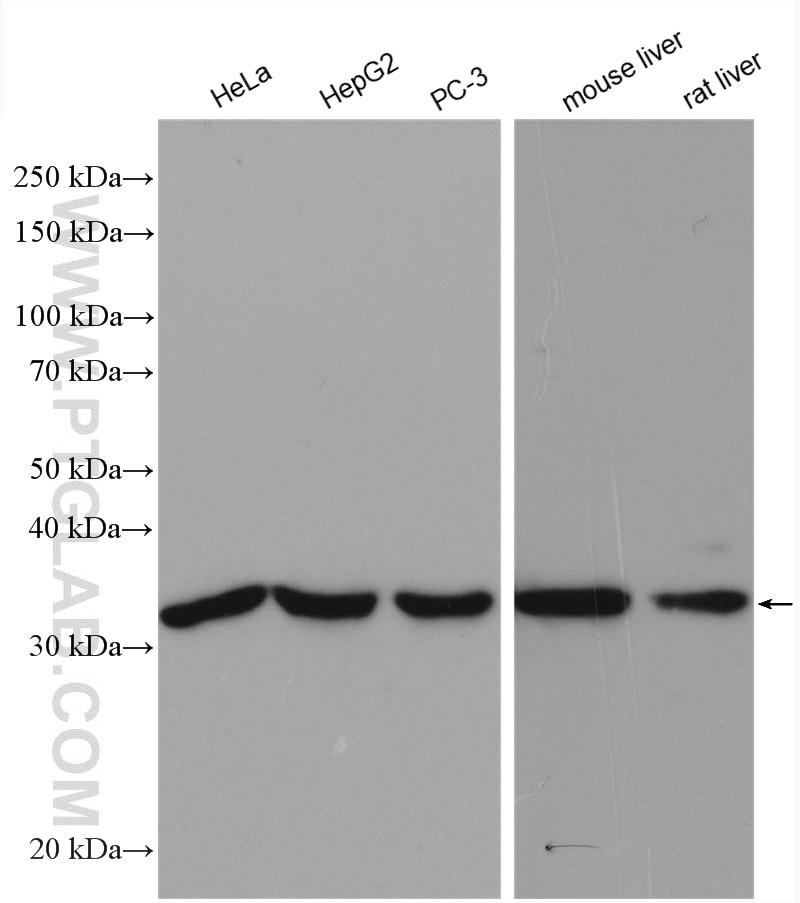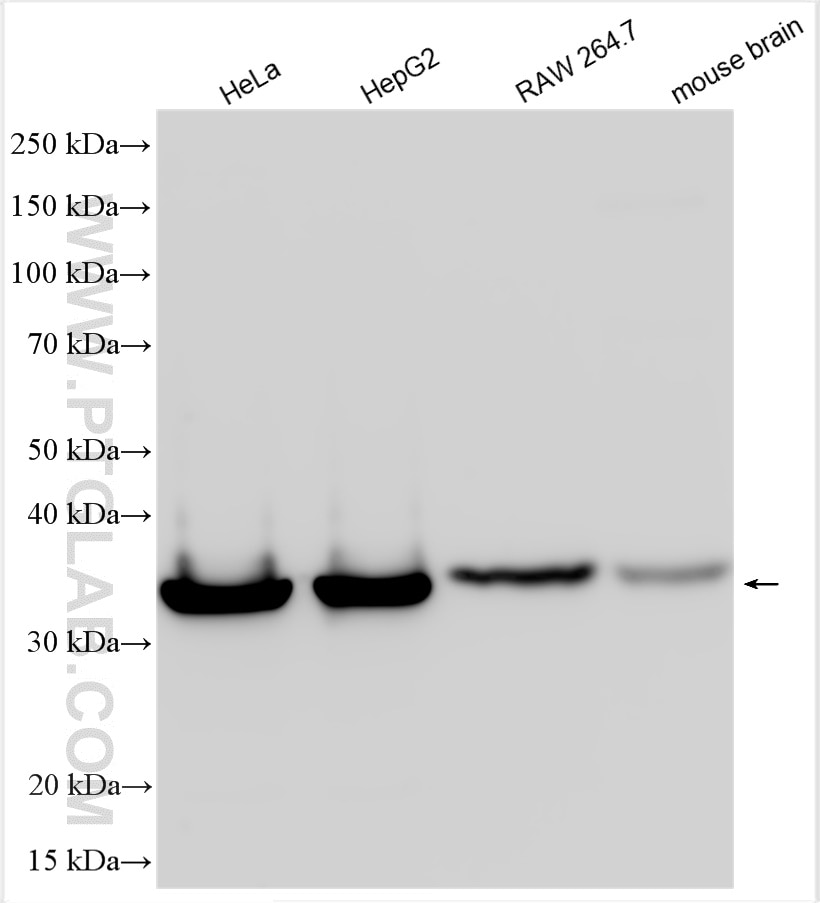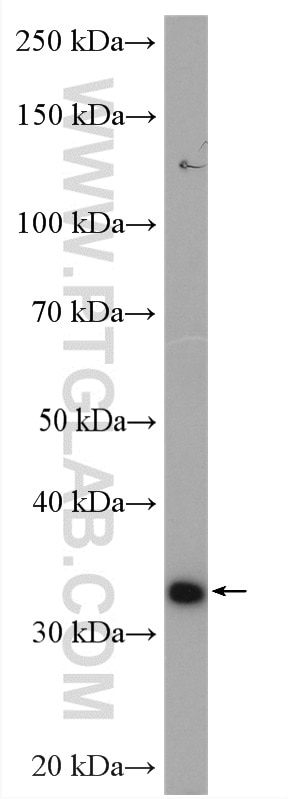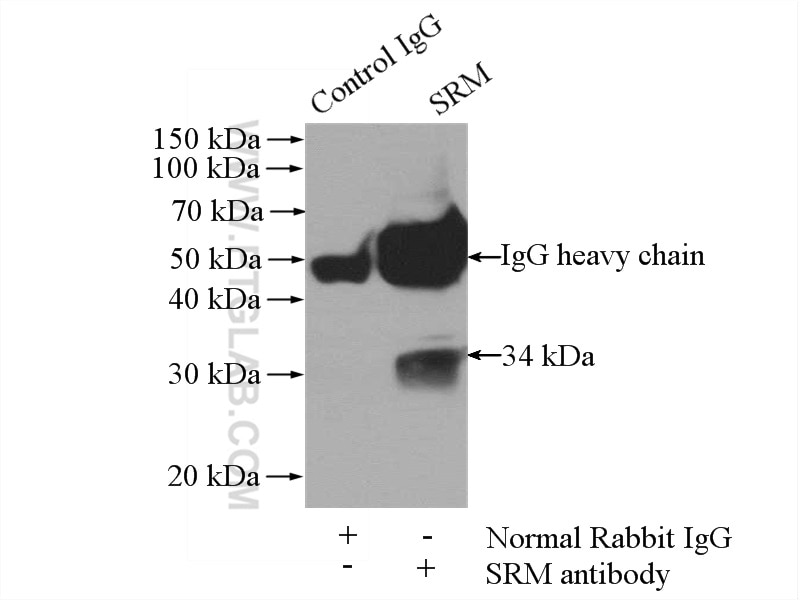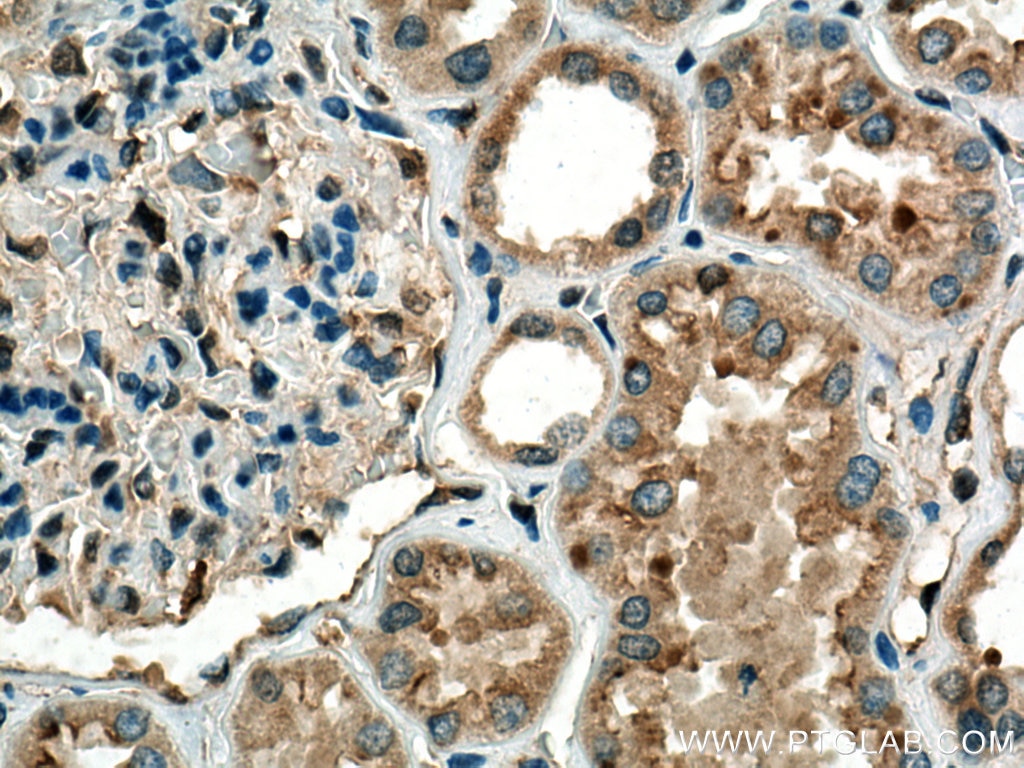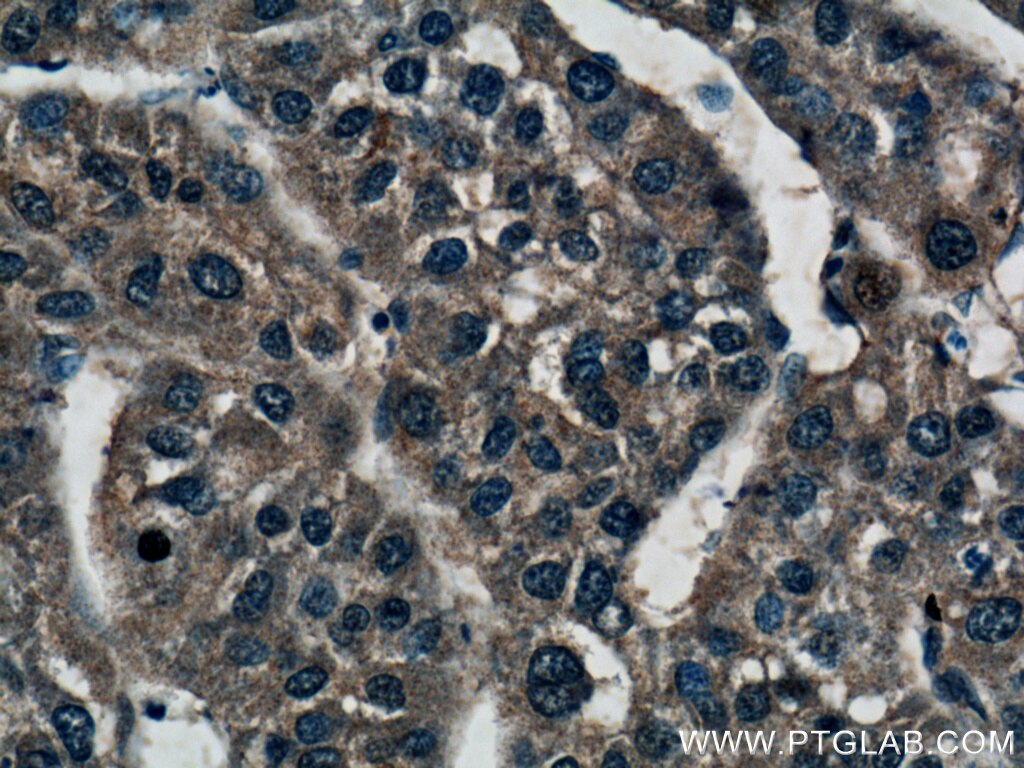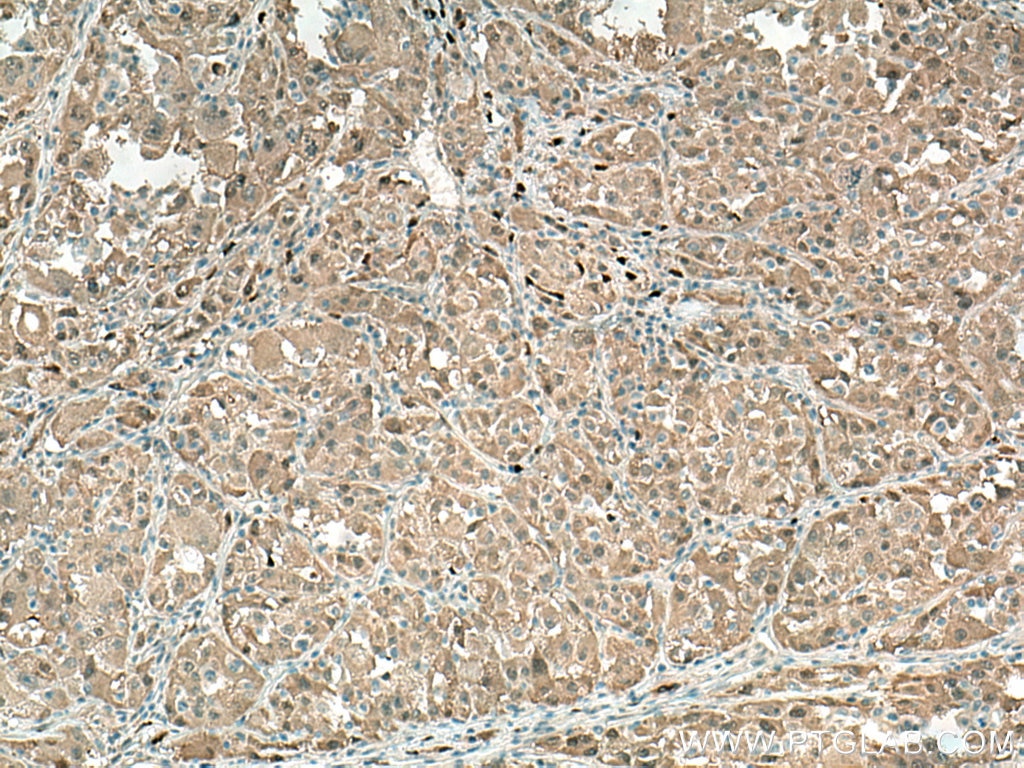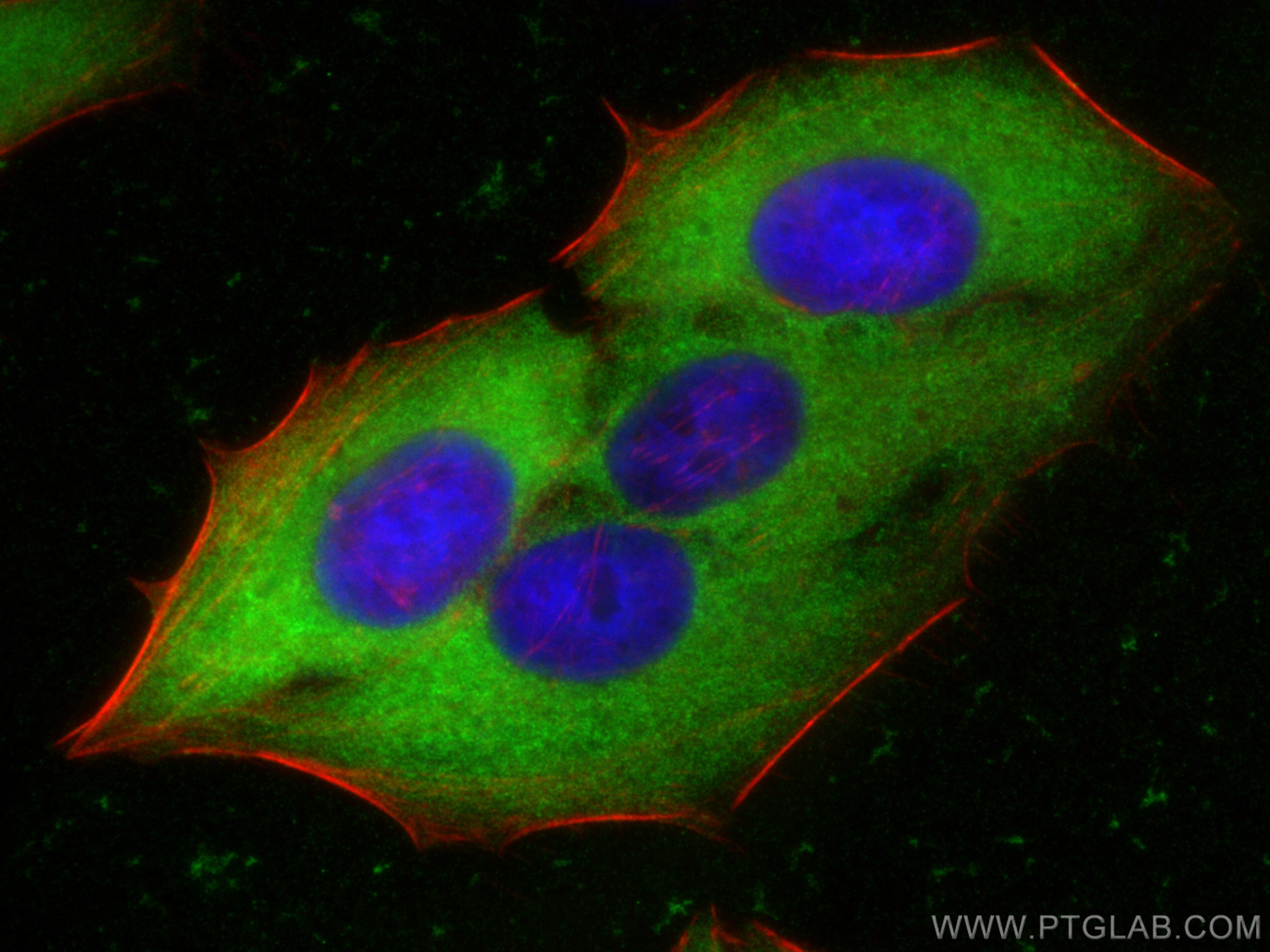Anticorps Polyclonal de lapin anti-Spermidine synthase
Spermidine synthase Polyclonal Antibody for WB, IHC, IF/ICC, IP, ELISA
Hôte / Isotype
Lapin / IgG
Réactivité testée
Humain, rat, souris
Applications
WB, IHC, IF/ICC, IP, ELISA
Conjugaison
Non conjugué
N° de cat : 19858-1-AP
Synonymes
Galerie de données de validation
Applications testées
| Résultats positifs en WB | cellules HeLa, cellules HepG2, cellules LNCaP, cellules PC-3, cellules RAW 264.7, tissu cérébral de souris, tissu hépatique de rat, tissu hépatique de souris |
| Résultats positifs en IP | tissu hépatique de souris |
| Résultats positifs en IHC | tissu rénal humain, tissu de cancer du foie humain il est suggéré de démasquer l'antigène avec un tampon de TE buffer pH 9.0; (*) À défaut, 'le démasquage de l'antigène peut être 'effectué avec un tampon citrate pH 6,0. |
| Résultats positifs en IF/ICC | cellules HepG2, |
Dilution recommandée
| Application | Dilution |
|---|---|
| Western Blot (WB) | WB : 1:500-1:3000 |
| Immunoprécipitation (IP) | IP : 0.5-4.0 ug for 1.0-3.0 mg of total protein lysate |
| Immunohistochimie (IHC) | IHC : 1:250-1:1000 |
| Immunofluorescence (IF)/ICC | IF/ICC : 1:50-1:500 |
| It is recommended that this reagent should be titrated in each testing system to obtain optimal results. | |
| Sample-dependent, check data in validation data gallery | |
Applications publiées
| KD/KO | See 1 publications below |
| WB | See 13 publications below |
| IHC | See 2 publications below |
| IF | See 1 publications below |
Informations sur le produit
19858-1-AP cible Spermidine synthase dans les applications de WB, IHC, IF/ICC, IP, ELISA et montre une réactivité avec des échantillons Humain, rat, souris
| Réactivité | Humain, rat, souris |
| Réactivité citée | Humain, souris |
| Hôte / Isotype | Lapin / IgG |
| Clonalité | Polyclonal |
| Type | Anticorps |
| Immunogène | Spermidine synthase Protéine recombinante Ag13936 |
| Nom complet | spermidine synthase |
| Masse moléculaire calculée | 302 aa, 34 kDa |
| Poids moléculaire observé | 34 kDa |
| Numéro d’acquisition GenBank | BC000309 |
| Symbole du gène | Spermidine synthase |
| Identification du gène (NCBI) | 6723 |
| Conjugaison | Non conjugué |
| Forme | Liquide |
| Méthode de purification | Purification par affinité contre l'antigène |
| Tampon de stockage | PBS with 0.02% sodium azide and 50% glycerol |
| Conditions de stockage | Stocker à -20°C. Stable pendant un an après l'expédition. L'aliquotage n'est pas nécessaire pour le stockage à -20oC Les 20ul contiennent 0,1% de BSA. |
Informations générales
Spermidine synthase is an enzyme that catalyzes the transfer of the propylamine group from S-adenosylmethioninamine to putrescine in the biosynthesis of spermidine. The polyamines putrescine, spermine, and spermidine are ubiquitous polycationic mediators of cell growth and differentiation. Spermidine synthases catalyze the production of the linear triamine, spermidine, from putrescine. They utilize decarboxylated S-adenosylmethionine (dc-SAM), a universal cofactor of aminopropyltransferases, as a donor of the aminopropyl moiety (PMID:31134111).
Protocole
| Product Specific Protocols | |
|---|---|
| WB protocol for Spermidine synthase antibody 19858-1-AP | Download protocol |
| IHC protocol for Spermidine synthase antibody 19858-1-AP | Download protocol |
| IF protocol for Spermidine synthase antibody 19858-1-AP | Download protocol |
| IP protocol for Spermidine synthase antibody 19858-1-AP | Download protocol |
| Standard Protocols | |
|---|---|
| Click here to view our Standard Protocols |
Publications
| Species | Application | Title |
|---|---|---|
Nat Commun Macrophage ABHD5 promotes colorectal cancer growth by suppressing spermidine production by SRM. | ||
Cancer Sci The miR-1908/SRM regulatory axis contributes to extracellular vesicle secretion in prostate cancer. | ||
J Proteomics Proteomic analysis revealed different responses to hypergravity of soleus and extensor digitorum longus muscles in mice. | ||
Am J Physiol Cell Physiol The Regulation of Polyamine Pathway Proteins in Models of Skeletal Muscle Hypertrophy and Atrophy - a potential role for mTORC1. | ||
Biol Reprod Progesterone and interferon tau regulate expression of polyamine enzymes during the ovine peri-implantation period. |
Avis
The reviews below have been submitted by verified Proteintech customers who received an incentive for providing their feedback.
FH Hua (Verified Customer) (08-15-2024) | Good antibody.
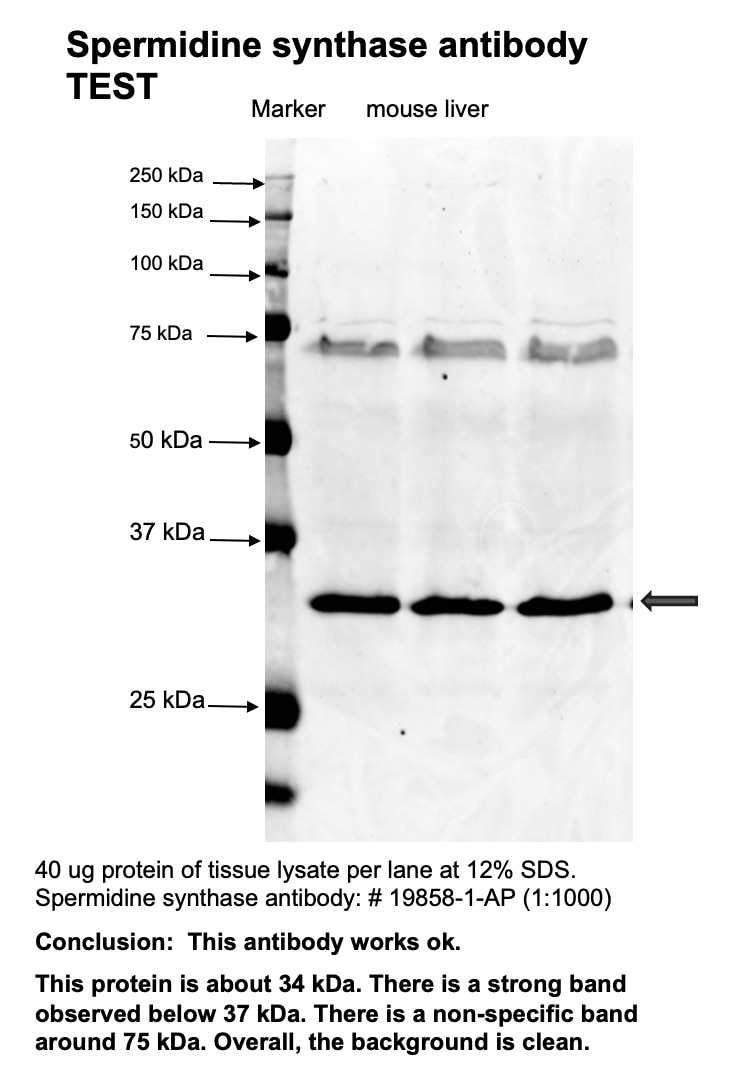 |
